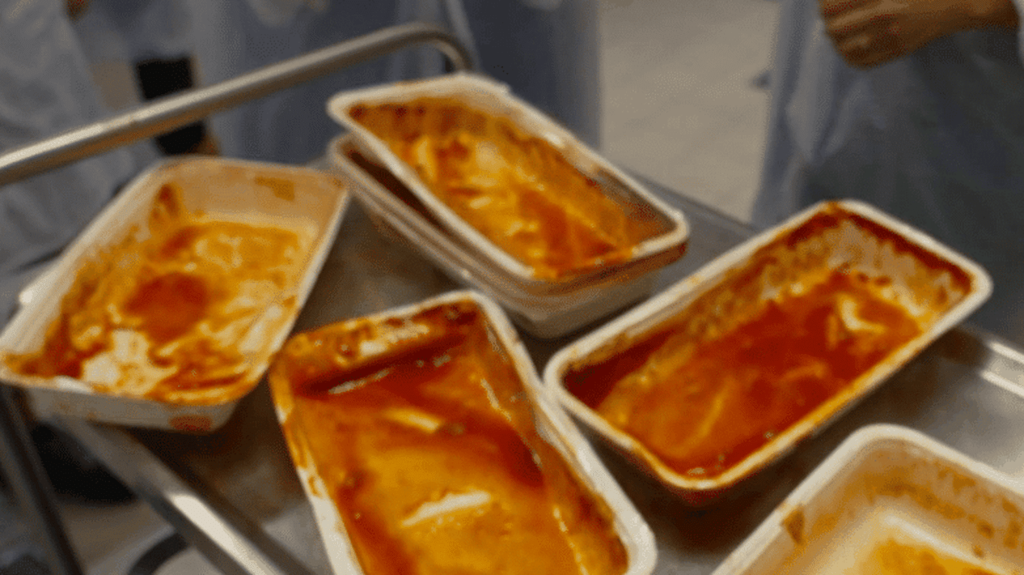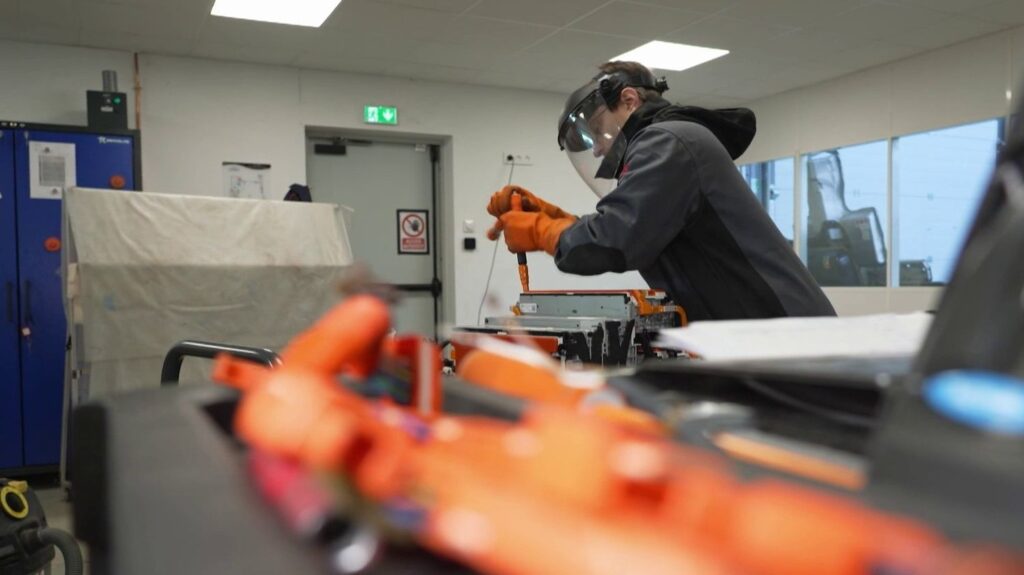Published
Reading time: 5min – Video: 5min
5 minutes
Plastic has been prohibited in all canteens in France since January 1, 2025. But is this really the case? France Télévisions investigated and made disconcerting discoveries: despite the promises of industrialists, there are plastic in canteens, well hidden in trays, however deemed 100% natural.
This text corresponds to part of the transcription of the report above. Click on the video to watch it in full.
Since January 1, 2025 and equal law, to serve or warm food in school canteens, plastic trays are now prohibited. But how to replace them? According to advertisements, manufacturers have found an ecological alternative: vegetable trays, with cellulose or tree fiber, used today in multiple schools. But the eye of 8 p.m. Tuesday, September 30, reveals the plastic is still on the menu. And it’s a well -kept secret. The team has an appointment in a canteen without plastic. To do this, you must first equip yourself with a plastic outfit. The kitchen is managed by Scolerest, a collective catering company which serves 300,000 meals a day in schools.
The Director General welcomes. The dishes are reheated at a vegetable tray, like a chicken with ketchup: “It is not plastic. (…) On a certain point. It’s cellulose. “”
The 20 -hour eye team failed to recover a tray, but the technical sheet arrived a few days later: the tray would be made up of cellulose pulp, laminated by a film of vegetable origin. No mention of plastic. Direction, therefore, the garbage cans of the town, where we find the same trays.
“”This is the Monday menu, minced chicken, Ketchup sauce of the chef“, Confirm the journalist. Is this tray really composed only of cellulose? What does this film contain? Who is in contact with food? To find out, the team sent the tray to a laboratory in the Bordeaux region which analyzed this film. What do these results tell us? “It contains plastic. There are polymers of petro-sourced origin in your tray. (When they say laminated by a film of plant origin), it is not 100 % vegetable and it remains once again plastic“, confirms Etienne Grau, teacher-researcher at the University of Bordeaux (Gironde)
“”Impossible“, therefore, whether it is cellulose, assures the researcher. Faced with these results, school, the service provider in the canteens, refers to Rescaset who sells the trays. This one specifies:”We are not manufacturers of the product mentioned. We refer to the elements provided by our supplier. The results of analysis on the fossil origin of the film that you evoke surprise us.“”
Scholarset, provider present in many canteens in France, therefore says not to be aware of the presence of plastic and returns the ball to Rescaset, one of the greatest suppliers in France of eco-packages, who, in turn, returns the ball to a mystery manufacturer, of which France Télévisions will never have the name … No one seems to know the composition of the tray.
All the more surprising in a few clicks on the website of the Ministry of Agriculture, we read in this guide for canteens this alert: “Some manufacturers deceive consumers by not having their products clearly like plastic. To our knowledge, all the re -use containers on the market still have layers, plastic films and are therefore not in conformity. “
The team managed to chat with one of these trays manufacturers, who does not know that it is recorded. What are they composed of? He evokes a bioplastic. According to the Ministry of Ecological Transition, not only is it not authorized for warming in canteens, but it is also liable to a fine of 45,000 euros. If the question is sensitive, it is also because these new trays worry certain scientists. The eye of the 8 p.m. was able to have a preview of an unprecedented study in a laboratory. Nine cellulose trays have been analyzed.
In contact with food or oil, for example, the plastic film of this tray model releases, with heat, molecules. These are then tested on fish to find out what their impact on hormones is. “”On several cellulose trays, we have highlighted this phenomenon of hormonal disturbance or endocrine disturbance. Repeated exposure to endocrine disruptors can be an additional risk factor to develop certain types of diseases such as type 2 diabetes“, explain Jean-Baptiste Fin, full professor at the National Museum of Natural History.
To remove plastic, municipalities with less than 2,000 inhabitants benefit from a delay. For all others, the authorities recommend reheating dishes in stainless steel or glass, certainly more expensive than plastic.

/2025/09/30/plastique-68dc4104dddc9995730346.png)

